What is structured data?
Structured data is a way of organizing information on a web page so that it can be read and understood by computers.
This type of data is used by search engines to understand the content of a web page and to index it for ranking in search results. In this blog post, we will discuss how structured data works and how you can use it to improve your SEO!
Structured Data & Unstructured Data Differences
Structured data is organized information that can be read by computers, while unstructured data is information that cannot be easily read or understood by machines.
For example, a structured data file may contain information about products in a database, while an unstructured data file may simply contain a list of product names.
When it comes to SEO, structured data can be used to help search engines understand the content of a web page and index it appropriately. This is because structured data provides information about the page in a well-organized format that can be read by computers.
Unstructured Data Examples
Example 1: “Jayvee called, he is coming on Wed in Tokyo”
Example 2: “You have a meeting on Monday in Singapore, Sheryl”
Structured Data Examples

Why is structured data important for SEO?
Structured data is important for SEO because it helps search engines understand the content of a web page.
When a search engine understands the content of a web page, it can index the page properly and rank it higher in search results. In addition, structured data can also be used to create rich snippets, which are search results that include additional information about a page (such as the product price or customer rating). Rich snippets can help your pages stand out in search results and attract more clicks!
Where do we use it?
Knowledge Graph
You can alter the information that appears on the right-hand side of the SERP for branded searches if you have a personal or corporate brand.
Google populates knowledge Graph Box using structured data.
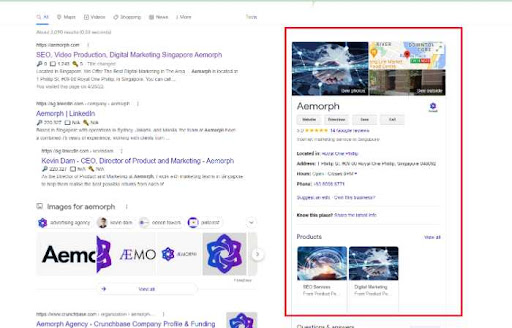
Rich snippets and Rich Cards
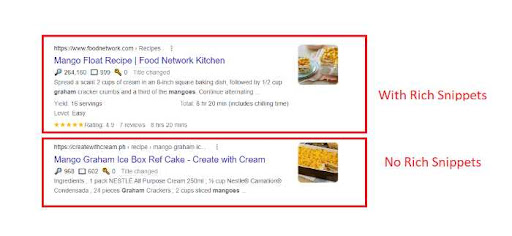
Structured data can be used to create rich snippets, which are search results that include additional information about a page (such as the product price or customer rating).
Rich snippets can help your pages stand out in search results and attract more clicks!

In addition to rich snippets, structured data can also be used to create rich cards.
Rich cards are similar to rich snippets, but they are designed for mobile users and they appear as a “card” on the SERP.
Rich cards can include information such as product photos, pricing, and customer ratings.
AMP (Accelerated Mobile Pages)
Structured data can be used on AMP pages to create rich results.
Rich results are similar to rich snippets and rich cards, but they are designed for mobile users and they appear as a “card” on the SERP.
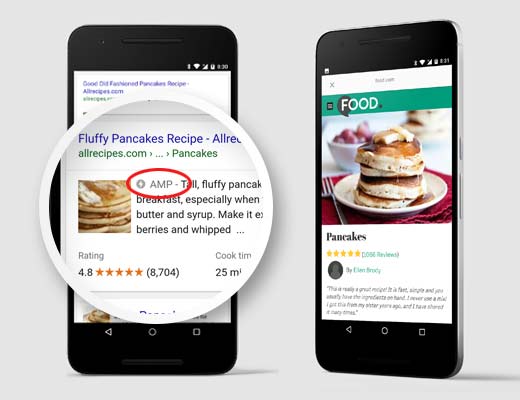
Social cards
If you utilize social media for promotion or simply want your material to look well when it’s shared on social media, make sure you use the sites’ appropriate testing tools to properly incorporate social markup:
Open Graph + Validation Tool on Facebook
Open Graph on LinkedIn
Cards + Validation Tool on Twitter
Validation Tool + Rich Pins on Pinterest
Open Graph on Instagram
AdWords
If you want to create an ad that includes structured data, using structured snippet extensions, you can add structured data to your AdWords advertising.
This is to provide additional information in your ad copy to assist consumers to understand your products or services better.
Breadcrumb
A breadcrumb trail on a page reveals the page’s position in the site hierarchy and may assist users in efficiently understanding and exploring a site. By beginning with the last breadcrumb in the breadcrumb trail, a user can navigate all the way up the site hierarchy, one level at a time.
Example:
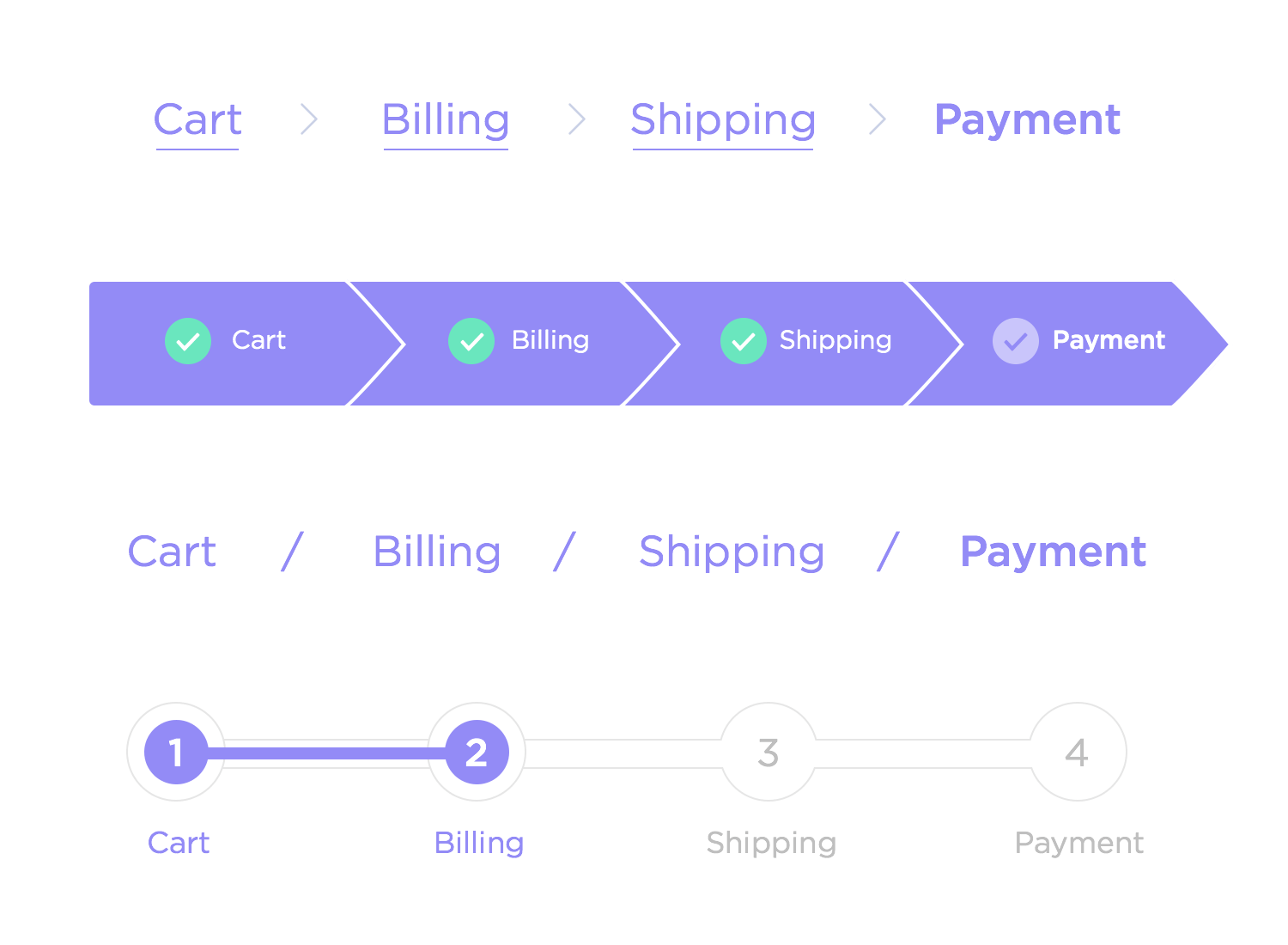
Google Search categorizes information from web pages using breadcrumb markup in the body of the page.
As depicted in the following usage examples, users can arrive at a page via a variety of search queries. While each Google Search query may return the same web page, the breadcrumb categorizes the material within the context of the Google Search inquiry.
Some types of markup, such as organizational links to other important pages on the site, will help a site appear in the SERPs.
Breadcrumbs are almost usually displayed solely for branded queries. If the inquiry is more specific than that, Google will direct the user to your site’s most relevant page.
Carousel
A carousel is a rich result that seems like a list that users may swipe through on mobile devices. It shows many cards from the same website (also known as a host carousel). To enable a carousel on your site, combine Carousel structured data with one of the allowed content types like Course, Movie, Recipe, and Restaurant.
When you use Carousel markup in conjunction with a supported content type, the following is how carousels may appear in Google Search:
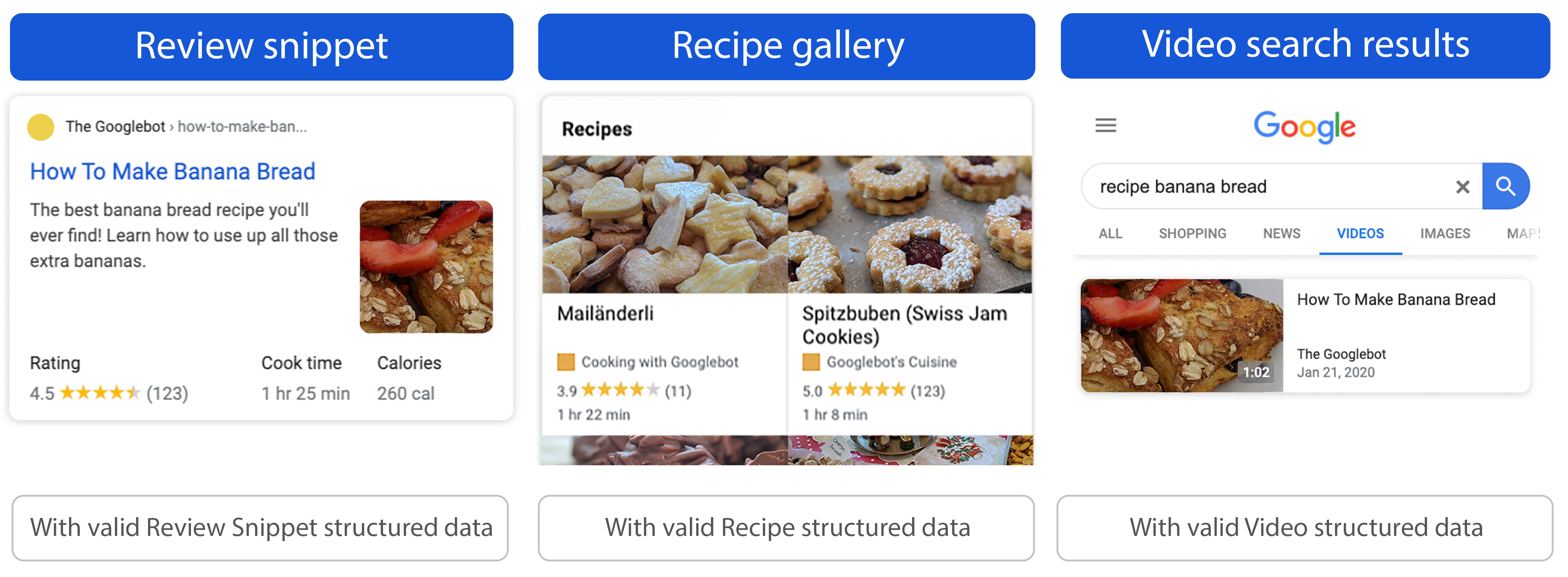
FAQs/How-To
A Frequently Asked Question (FAQ) page is a collection of questions and answers on a specific topic. Properly formatted FAQ pages may be eligible for a rich result on Google Search and an Action on Google Assistant, which can help your site reach the right users. Here’s an example of a result that includes a lot of FAQs:

How does structured data work?
Structured data is added to a web page using code (usually in the form of HTML tags). This code is read by computers and used to understand the content of the page.
For example, if you add structured data to a page about a product, that product will be indexed by search engines and may appear in search results.
What is Schema.org?
Schema.org structured data is a standardized format for adding structured data to web pages.
It was created by Google, Microsoft, Yahoo, and Yandex.
Schema.org structured data can be used on all types of web pages, including e-commerce product pages, blog posts, and articles.
Types of Structured Data Format
JSON-LD structured data
JSON-LD is a newer format for adding structured data to web pages.
It was created by the W Web Consortium (W3C). JSON-LD structured data can be used on all types of web pages, including e-commerce product pages, blog posts, and articles.
Microdata structured data
Microdata is an older format for adding structured data to web pages.
It was created by the W Web Consortium (W3C ). Microdata structured data can be used on all types of web pages, including e-commerce product pages, blog posts, and articles.
RDFa structured data
RDFa is an older format for adding structured data to web pages.
It was created by the W Web Consortium (W3C). RDFa structured data can be used on all types of web pages, including e-commerce product pages, blog posts, and articles.
How to Use Structured Data for SEO?
Now that we know what structured data is and how it works, let’s take a look at how you can use it in your SEO Strategy.
There are 4 easy steps on how to implement structured data for SEO
- Identify your structured data items
- Generate the markup
- Test your code first
- Deploy the code on your website
1. Identify Your Structured Data Items
The first step is to identify the structured data items that you want to include on your web pages.
For each structured data item, you will need to provide a name and value.
For example, if you want to add structured data for a product, you would need to specify the product name, price, image URL, and so on.
The following are some of the most prevalent uses of structured data:
- Person schema markup
- Organization / LocalBusiness schema markup
- Product schema markup
- Breadcrumbs schema markup
- Article schema markup
- HowTo schema markup
- FAQPage schema markup
- Recipe schema markup
- Reviews schema markup
- Videos schema markup
2. Generate The Markup
Once you have identified the structured data items that you want to include on your web pages, you will need to add them to the code of your web pages.
You can do this manually or by using a structured data generator tool.
- Use markup generator such as Merkle

- Google prefers JSON-LD format
3. Test Your Code First
After generating the markup, you have to check it is valid structured data.
Google recommends that you start with the Rich Results Test to see what Google-rich results can be generated for your page.
For generic schema validation, use the Schema Markup Validator to test all types of schema.org markup, without Google-specific validation.
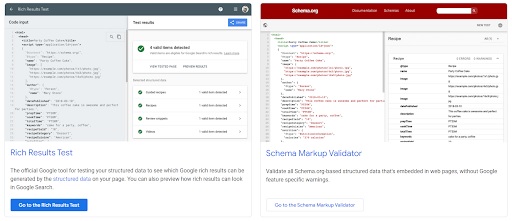
4. Deploy The Code On Your Website
- Straight into the HTML
JSON-LD schema is formatted as a script that’s placed into theorof your HTML.
- Using Google Tag Manager
Paste the created schema as a custom HTML tag and set up the trigger based on a page view to a specific page or pages.
- Using a CMS and plugins (Yoast, RankMath, SEOPress)
What are your thoughts?
We hope this blog post has been helpful in explaining what structured data is and how it can be used to improve your SEO.
If you have any questions, please feel free to contact us! We would be happy to help.




